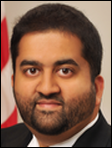5 Questions with Rushika Fernandopulle, MD CEO, Iora Health
Rushika Fernandopulle, MD is CEO and co-founder of Iora Health, a chain of primary care practices that employs 160 at facilities in six cities across the country. The four year-old company, which expects to double in size this year, interacts with thousands of patients a week – many via email, phone, text, and video. Iora Health has opted out of Meaningful Use in favor of focusing on, as Fernandopulle puts it, “the goal of building a technology platform to allow us to deliver better care for our patients, period. I’m not sure I agree with the fundamental premise that the government should decide from the top what features should be in our platform. We should decide this bottom up based on our needs. One would think the failure of Soviet style central planning would inform this.”
The company serves patients through relationships with employers and payers like Humana, and places a strong emphasis on customer service. “We start by hiring physicians and other staff who understand we are in a service industry and have the right culture,” he explains. “During training, we expose people to excellent service industries outside of healthcare (e.g. Apple, Zappos, Ritz Carlton), and build our system to help us provide excellent service. This isn’t a program or initiative – it is at the core of who we are.”

Iora Health has been described as wanting to be “the Starbucks of healthcare.” What sort of cultural and technological challenges are you encountering in scaling primary care nationwide?
We did something a little crazy but strategic right from the start. Our first two practices opened within a few weeks of each other back in 2012. They were in Hanover, N.H. with Dartmouth College, and in Las Vegas with the Culinary Union. I don’t know of many others who would do this. We did it because we want to transform healthcare, and we knew then that in order to do that we had to think about how we would scale from the start. Today, if you go to either of these – or the 10 other practices we have around the country – you’ll see that the culture is the same.
This goes for tech, too. We didn’t build our system to support one practice. We built it to scale. Because we built it and have a team dedicated to it, when we want to change anything, we can – we don’t have to put in a request to another company and get in a queue. We prioritize our needs and implement them.
What was the impetus behind developing rather than buying an EHR off the shelf? Did you test drive any? If so, from what vendors?
Existing EHRs, not surprisingly, are built for the current business model – to increase coding and billing. We have a fundamental job to do – to improve the health of our patients and keep them out of trouble. I have worked with a number of EHRs prior to founding Iora Health and struggled to use them in our very different care and business model. For years I tried to get some of the existing vendors to adapt their products for us, and realized that – as with our care model – we simply had to start from scratch.
How long did EHR development and roll out take?
Our tech team develops and rolls out iterations of our platform every two weeks. The first instance was built in six months, which is unheard of in the EHR world! We build with MVP (Minimum Viable Product) in mind and then get feedback from the care teams and improve. The development team, by the way, includes doctors, health coaches, and other members of our care team. This isn’t a system that was built in a backroom separate from the care and delivered a year or two later!
What sort of features are unique to your EHR?
Some unique features include: the patient’s ability to view their entire chart, schedule encounters (video, phone, and in person), and send us data; robust, proactive task management; patient stratification and population management; and a wide lens where our care teams can see what is happening to our patients in the rest of the healthcare system.
What will the next few years hold for the company? Will you look into offering telemedicine services, or other digital health offerings?
We are really excited about the future. This year we closed our Series C funding and already opened one practice with Hartford Healthcare. We will double in size and expect to double in size again next year. What’s fundamental about our vision and our success is that we built this around relationships and culture. We think it’s silly to think of telemedicine as a separate thing. From the beginning we have based our model on continuous healing relationships, and that means being able to interact with our patients using the technology they are already using in all the other parts of their lives.
Contacts
Jennifer, Mr. H, Lorre, Dr. Jayne, Dr. Gregg, Lt. Dan
More news: HIStalk, HIStalk Connect.
Get HIStalk Practice updates.
Contact us online.
Become a sponsor.






































The article about Pediatric Associates in CA has a nugget with a potentially outsized impact: the implication that VFC vaccines…